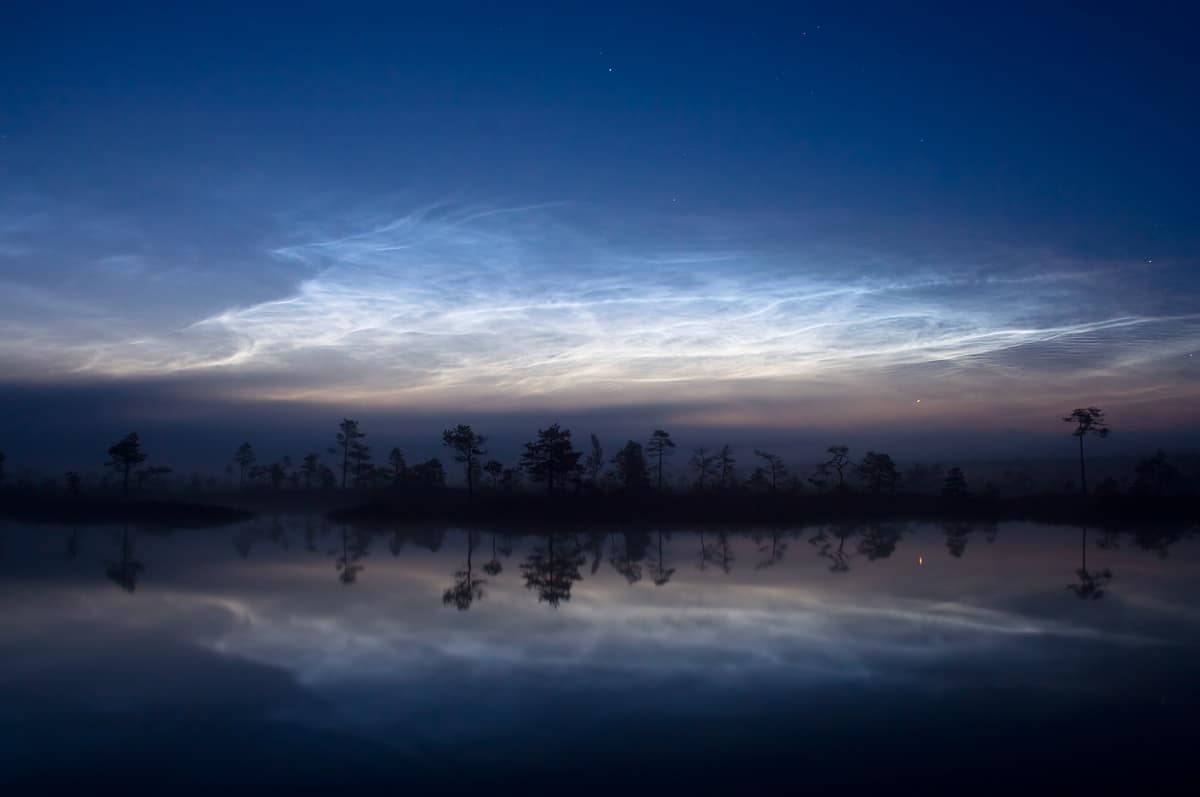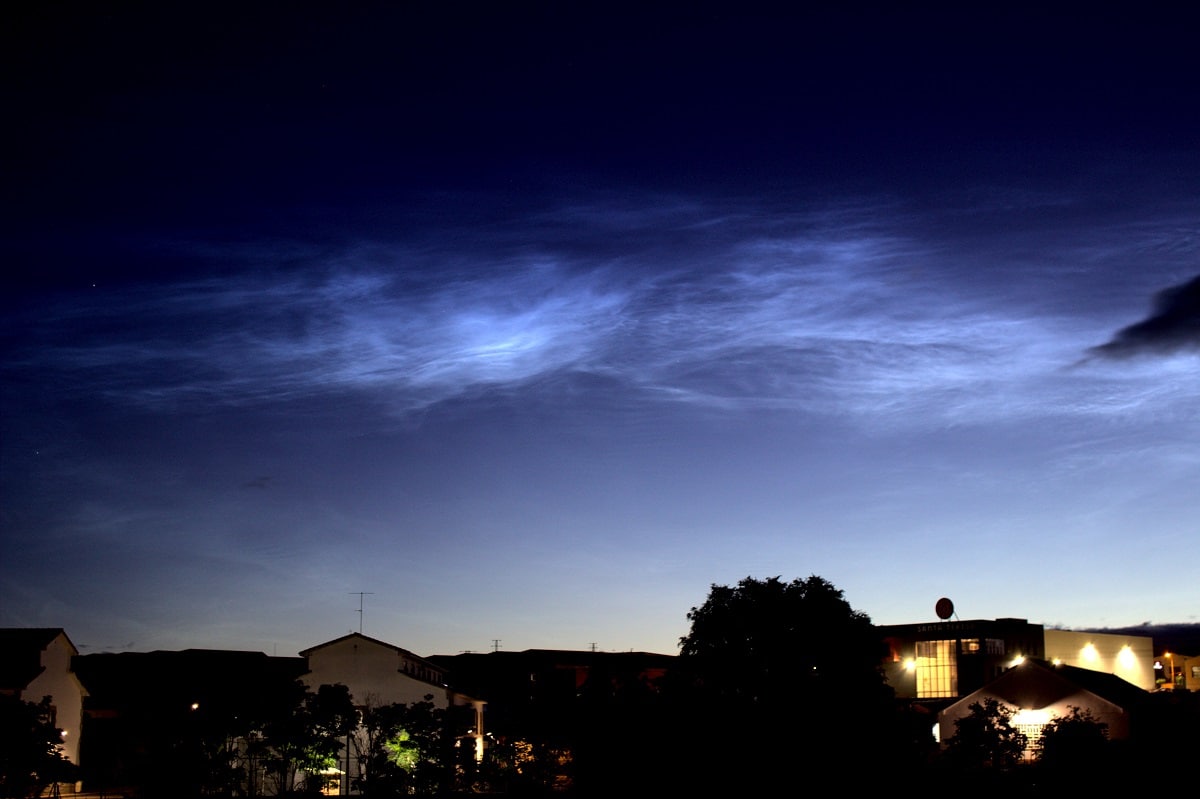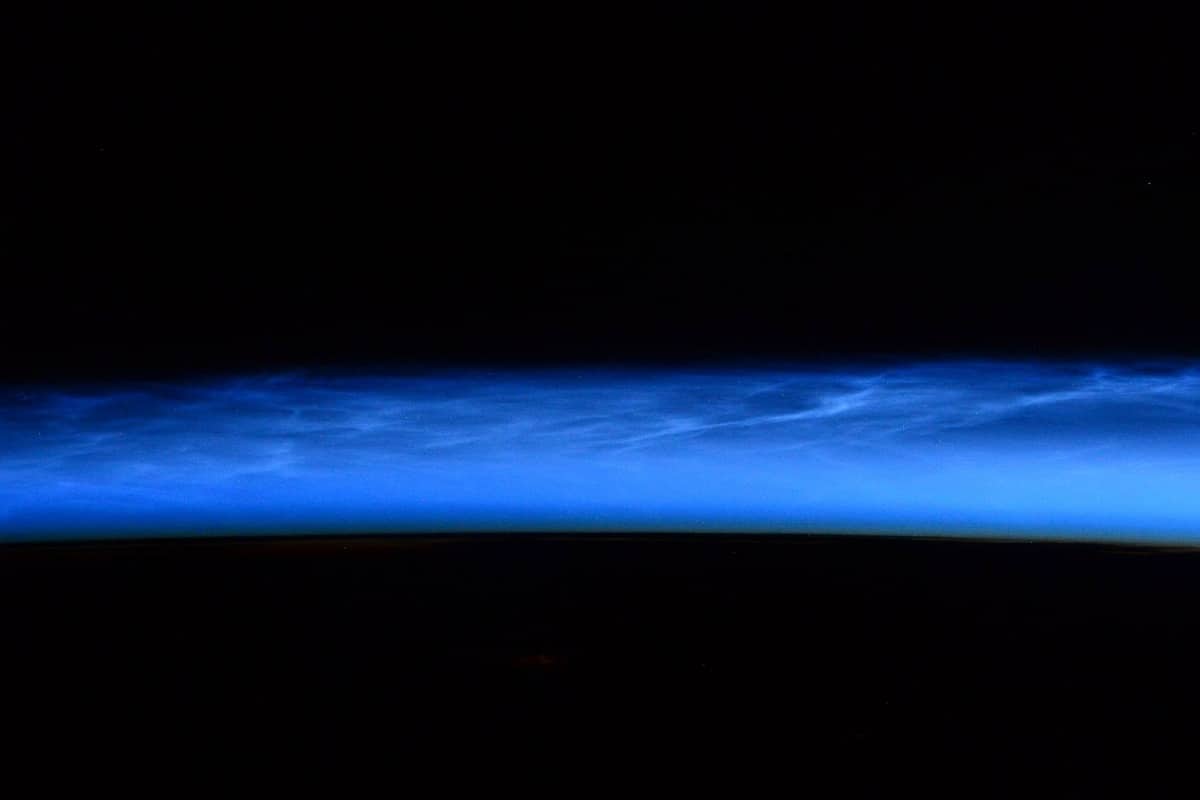
We know that there are different types of clouds depending on their shape and formation. One of them are the noctilucent clouds. Common clouds are made of crystals mixed with dust in the air. Noctilucent clouds form at the edge of atmospheric space called the mesosphere.
In this article we are going to tell you everything you need to know about noctilucent clouds and their characteristics.
What are noctilucent clouds

When a meteor hits the atmosphere, leaves a trail of dust 100 kilometers above the Earth, where the air pressure is practically nil. The water vapor adheres to the dust left behind by the meteorite. The charged bluish-white color of noctilucent clouds is caused by tiny crystals that form when frozen water vapor adheres to meteor dust.
They are the highest clouds we know of and form in the mesosphere, about 80 kilometers high (70 kilometers above the well-known cirrus clouds). The only atmospheric phenomenon that appears above the noctilucent clouds is the Northern Lights.
It has an impressive appearance, with waves across the night sky gathering into pale strands or glowing electric blue filaments that appear to come from another planet, aliens. That's not too much, as they are made of tiny ice crystals or water ice.
How noctilucent clouds form

Some studies have concluded that part of this cloud may have formed from the freezing of water expelled into the atmosphere by the space shuttle. But also it has been observed that at least 3 percent of the ice crystals that form them are the remains of meteorites (the so-called "meteorite smoke").
They are also "very shy" clouds and are really only visible at sunset and at high latitudes (between 50 and 70º) and in summer. Assuming that "geometrically" they are very slippery, at the correct (high) latitude, one can look into the west 30 to 60 minutes after sunset, when the sun is hidden between 6 and 16º above the horizon, the location is favorable for these clouds to locate.
Although as far as observation is concerned, there is no doubt that the International Space Station has considerable advantages and usually gives us spectacular photographs. It is also worth noting in their characteristics that they are independent, since they do not seem to be related to any particular weather state.
While there is a growing suspicion that they may be good indicators (warning lights) for some aspects of climate change, they are appearing more frequently at lower latitudes.
It is believed that after the methane, a major greenhouse gas, rises in the atmosphere and undergoes a complex series of oxidation reactions, turns into water vapor, which will lead to an increase in the number of such clouds and their possible spread at higher latitudes. So our noctilucent cloud is more or less the canary that old miners carry to detect gas leaks.
In fact, NASA's AIM (Aerology of Middle Ice) mission is in charge of studying this type of cloud. On this site, we even have access to "guided imagery" that predicts the visibility and location of these clouds.
clouds on mars

Another curiosity about these clouds is that they have "cousins" on Mars, where noctilucent clouds made of carbon dioxide crystals were discovered in 2006 and may be more "exotic" than the Earthlings with whom they share a structure.
I do not want to finish this article without talking about the strange discoveries of such clouds, as all what is related to them, peculiar at least. Krakatoa erupted on August 27, 1883.
It was deadly (36.000 people lost their lives), but very interesting from a meteorological point of view, since the large amount of ash injected into the atmosphere changed weather patterns for several years, including a decrease in the average temperature of the planet of 1,2º, which also makes the planet's sunsets take on an intense reddish hue.
So one of the most common pastimes at the time was to contemplate these spectacular sunsets. Thus, in 1885, TW Backhouse was a more curious and persistent observer than others, continuing until after dark, when on some nights he could see faint electric blue filaments.
Necessary elements for your training
Polar mesospheric clouds require two elements: dry particles and moisture. Although water vapor is almost non-existent in the mesosphere, it is unlikely, as its colorful presence shows. At this altitude, the air is estimated to be 100.000 times drier than that of the Sahara, with temperatures of 140 degrees below zero.
What happens is that very rare water vapor adheres to the hygroscopic particles, forming small ice crystals that come together to form these clouds. This phenomenon only occurs around the summer equinox in both hemispheres.
In the north, it will be at the end of May, June and July, and in the south, at the end of November, December to January. And you can only see them after sunset, because it is so high that they will still receive sunlight. Although the Earth is completely dark, at 80-85 km the sun still touches them.
Countries where it can be seen
Latitude, the distance between the parallels and the equator, plays an important role here. The closer you get to the poles, the more you see. This is mainly due to the circulation of the wind and the accumulation of cold air in this layer of the atmosphere. These clouds are usually seen from 50 degrees north latitude. That is to say, from Paris or London up and across the Atlantic, much higher than New York.
In the southern hemisphere, it can only be seen in southern Argentina, southern Chile, and New Zealand. But meteorologists have found that the presence of these clouds has increased at lower latitudes in recent years.
I hope that with this information you can learn more about noctilucent clouds and their characteristics.